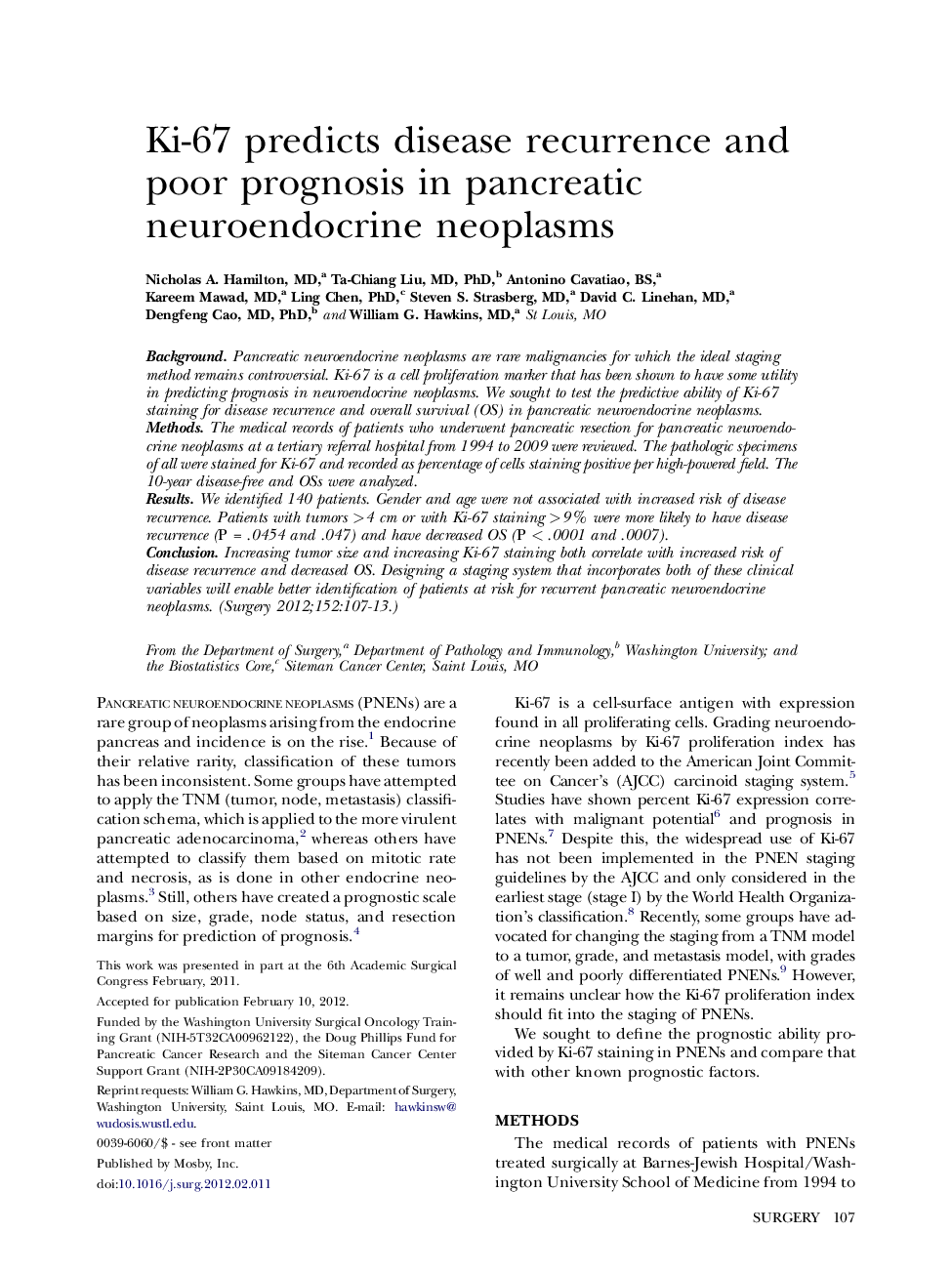| Article ID | Journal | Published Year | Pages | File Type |
|---|---|---|---|---|
| 4307982 | Surgery | 2012 | 7 Pages |
BackgroundPancreatic neuroendocrine neoplasms are rare malignancies for which the ideal staging method remains controversial. Ki-67 is a cell proliferation marker that has been shown to have some utility in predicting prognosis in neuroendocrine neoplasms. We sought to test the predictive ability of Ki-67 staining for disease recurrence and overall survival (OS) in pancreatic neuroendocrine neoplasms.MethodsThe medical records of patients who underwent pancreatic resection for pancreatic neuroendocrine neoplasms at a tertiary referral hospital from 1994 to 2009 were reviewed. The pathologic specimens of all were stained for Ki-67 and recorded as percentage of cells staining positive per high-powered field. The 10-year disease-free and OSs were analyzed.ResultsWe identified 140 patients. Gender and age were not associated with increased risk of disease recurrence. Patients with tumors >4 cm or with Ki-67 staining >9% were more likely to have disease recurrence (P = .0454 and .047) and have decreased OS (P < .0001 and .0007).ConclusionIncreasing tumor size and increasing Ki-67 staining both correlate with increased risk of disease recurrence and decreased OS. Designing a staging system that incorporates both of these clinical variables will enable better identification of patients at risk for recurrent pancreatic neuroendocrine neoplasms.
